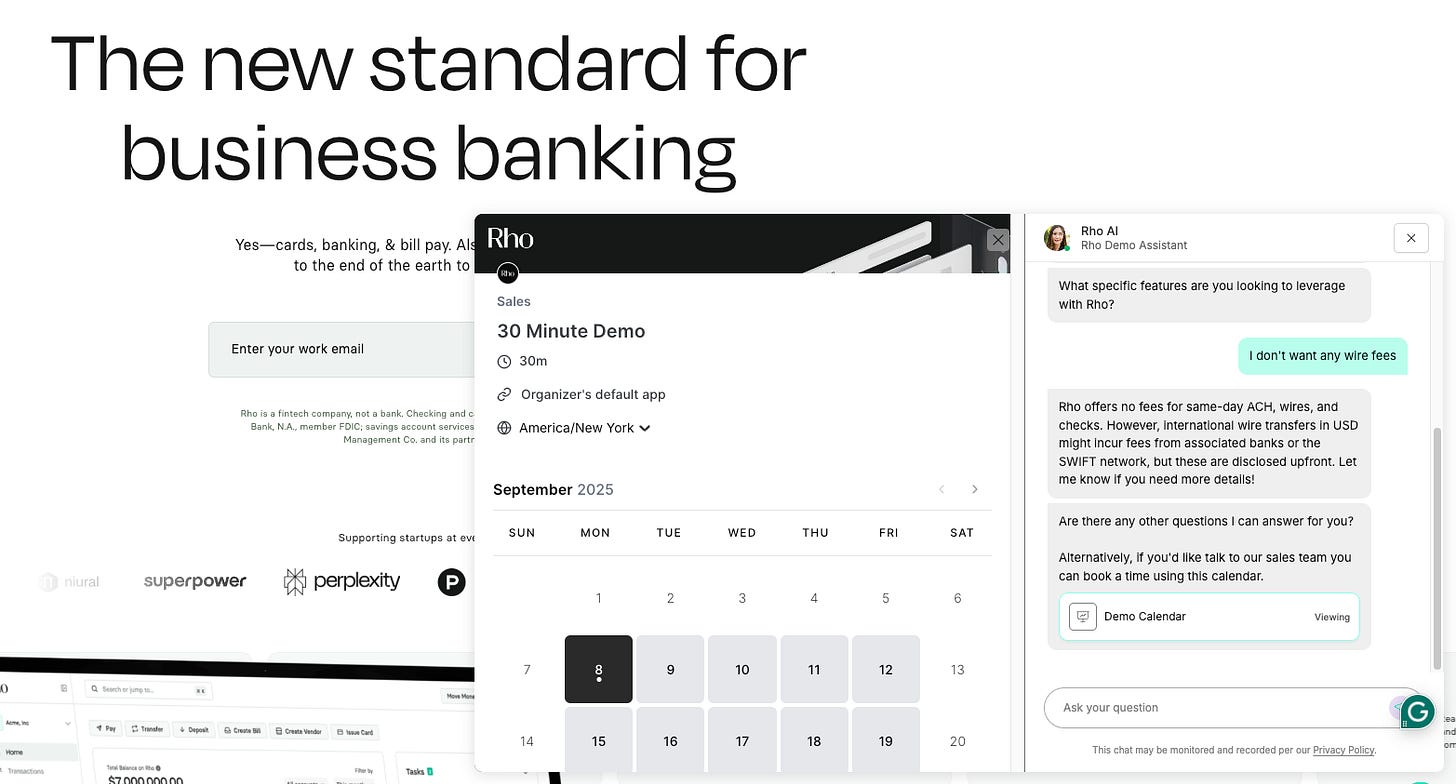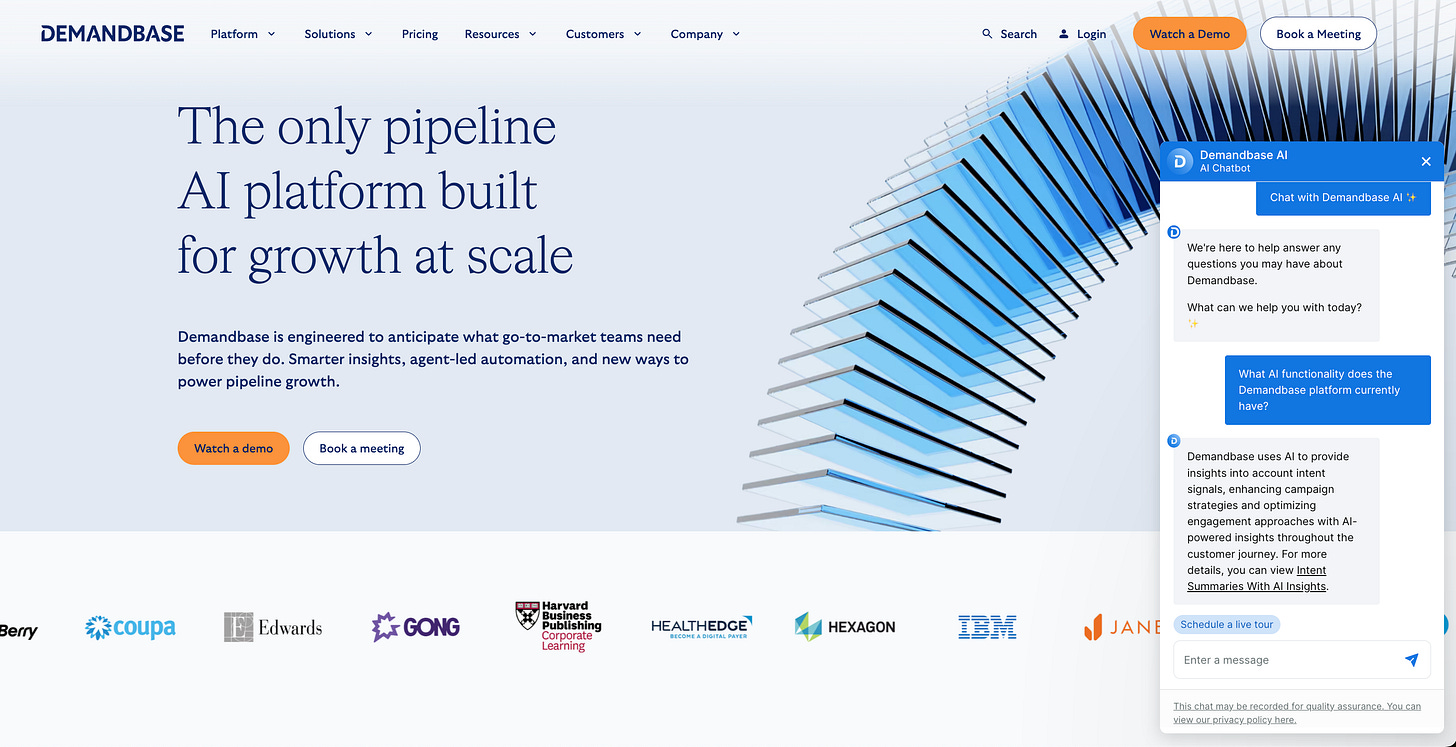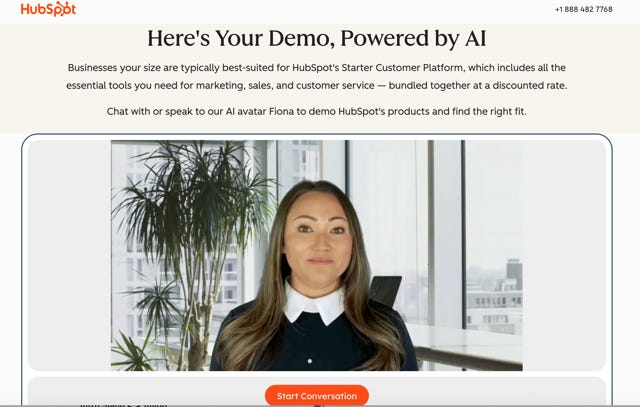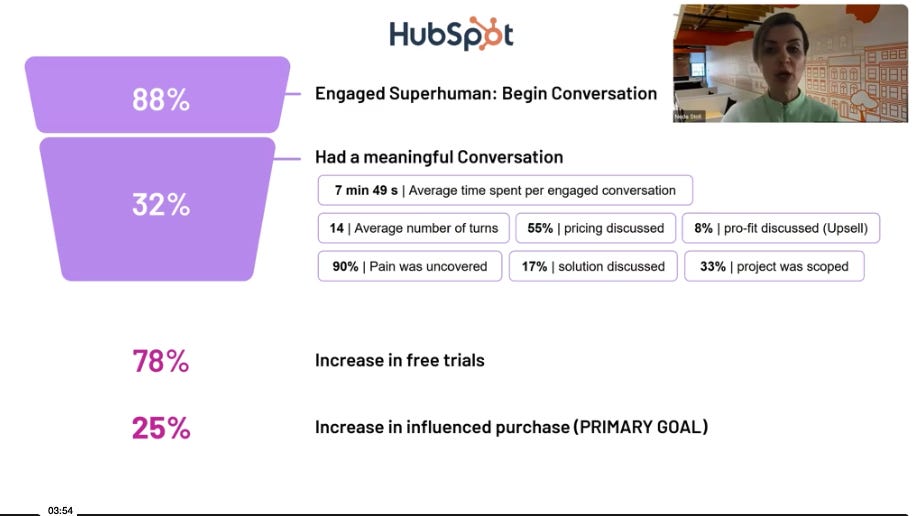How AI Is Rewriting Inbound Conversion: 3 Proven Use Cases
Proven in the Field: Three companies show how AI is already reshaping inbound workflows, and driving real results.
Marketers know that inbound lead conversion is throttled by delayed responses, SDR bottlenecks, and qualification friction. But with the rise of AI-native sales agents, the conversion funnel is being rebuilt for speed, precision, and scale. As we see more and more buyers using LLMs to search for solutions to their challenges, and then using vendor websites to qualify themselves, using AI to facilitate this process seems like a no-brainer.
As part of my series on GTM AI that actually works, I’m showcasing three compelling use cases in which companies replaced legacy inbound workflows with AI—and saw measurable results. While each of these companies is using a different platform based on their size and needs, they are all seeing similar results. Let’s dive in!
1. Rho and Spara: Automating Speed-to-Lead in a Timing-Sensitive Business
The Challenge
Rho is an all-in-one banking platform that sells to early-stage startups where timing is critical to their survival. Think funding events: a young startup’s ability to open accounts quickly can mean the difference between dying and thriving. Before they adopted AI agents, Rho was relying on basic lead routing; they didn’t even have an SDR team. With around 100 inbound signups a day and only seven salespeople, deals were falling through the cracks due to slow response times and lack of real-time qualification. “We had no one to sit behind Intercom or Drift and qualify traffic,” said CRO Tommy McNulty. “It was very bare-bones.”
The Solution
That’s when Rho turned to Spara, an agentic AI platform that autonomously qualifies, engages, and converts leads across chat, email, and voice. The goal: filter out unqualified leads, accelerate time-to-meeting, and free up sales reps to focus on high-value prospects.
The onboarding process was fast and lightweight, which was important to Rho given their lean operation. Spara’s team scraped Rho’s site, absorbed demo content and sales collateral, and was up and running within days. Embedded directly on the site, Spara handles two main workflows:
Demo Qualification: Triggered by “Book a Demo” CTAs, the agent asks pre-qualifying questions and passes meetings to sales.
Intent-Based Routing: It branches conversations based on user interest (e.g., partnerships, support, or product questions) and routes inquiries accordingly.
Results
The results were impressive, especially for such a small revenue team:
548 meetings booked and ~1,500 qualified leads engaged in 12 months
~$45 cost-per-meeting vs. $570 using the previous method
120+ support inquiries deflected from sales
Speed-to-lead reduced to under 4 seconds
Booked a $40M revenue customer directly via AI chat
Insight
It’s notable that buyers appreciated interacting with an AI agent that openly identified itself—especially when it quickly answered pre-purchase questions. Spara mimicked the intent and drive of a top-performing SDR but ran 24/7, meeting customers on their timeline. In addition, the setup doesn’t require rev ops or integrations, making it ideal for companies that don’t have the resources to build and maintain a custom or more complex solution.
2. Demandbase and Qualified: Scaling AI SDRs for Inbound Pipeline Generation
The Challenge
Demandbase’s marketing team was generating inbound traffic, but converting those leads to pipeline depended on human SDRs, which caused delays due to working hours, ramping, and attrition. Demandbase implemented Qualified in 2021. While they did see an improvement to customer conversion rates with better response times, they were still dependent on a human in the loop to answer those initial questions. The biggest continuing challenge answering customer questions that came in outside of working hours.
The Solution
“Piper” is an AI SDR agent built by Qualified specifically for inbound conversion. Piper interacts with site visitors, qualifies them, answers questions, and books meetings on its own, without an SDR. Demandbase converted their standard Qualified chatbots to Piper for all inbound traffic, except Tier 1 accounts.
Demandbase trained Piper using all their existing content (website, support site, and previous chat history) for two weeks and then turned it on for a couple of pages for two weeks to test its knowledge and ability to respond. After that, Piper went live across the entire site. They still train Piper monthly on any updates.
Demandbase is using Piper for two main use cases:
On-site chat to answer questions and convert to meetings
Email follow-up to prospects that engage with content on the site or attend events
Results
4x the amount of qualified meetings booked
Faster, 24/7 response to inbound leads
CMOs regained confidence in pipeline conversion without relying on junior SDR teams
Reduced hiring and training costs; faster scale and more consistent pipeline flow
Insight
Hannah Jordan, Head of Digital Marketing, described their legacy process as a “hope-based pipeline” reliant on an SDR team. Piper eliminated that dependency and created repeatable, scalable conversion—even during off-hours.
3. Hubspot and 1Mind: AI-Powered Lead Engagement for PLG
The Challenge
Hubspot’s Product-Led Growth (PLG) motion allows prospects to do their own research on the site and sign up for a trial without ever talking to sales. Yet key conversion moments—like integrations, pricing, or compliance questions—still need human-like guidance to move forward. Potential customers who wanted answers before talking to a sales rep could get frustrated trying to find the information and drop off the site. Hubspot tried chatbots to keep visitors engaged, but still saw a drop-off before taking a meaningful action like booking a demo or upgrading their solution.
The Solution
Hubspot worked with 1Mind to create “Fiona,” an AI agent, who engages buyers in conversation, asks the right questions, empathizes with pain points, and uses visuals to explain products or integrations. She can scope projects and confidently discuss pricing and packaging, giving prospects a complete and informed experience. Once the prospect is ready, she can connect them directly to sales.
Results
The results speak for themselves with a much higher engagement than legacy chat that is converting to pipeline. Fiona’s conversational, empathetic approach is proving that customers are receptive to an AI agent that can understand their challenges and answer their questions.
Insight
Fiona mimicked a helpful product expert rather than a scripted bot, meeting PLG users in their discovery flow and guiding them toward the right solution for them, providing a better customer experience. Hubspot is already looking at other ways to expand Fiona’s role across the website in other products.
The Takeaway
Across these use cases, three themes emerged:
Speed wins. Inbound prospects want answers now. AI can respond in seconds 24/7—humans can’t.
Scale doesn’t require headcount. AI agents now handle qualification, booking, and segmentation with greater consistency than people, without the turnover and ramp time.
Buyers are comfortable with AI—when it’s done right. Transparent, capable AI creates trust and accelerates decision-making. Potential customers are comfortable asking questions without the pressure of a live salesperson.
If you’re not sure about investing in a solution, you can try building your own.I recently shared a deep-dive on How to Build an AI Agent for Account Selection, which can help you get started. Whether you’re running a lean Series A startup or a scaled enterprise marketing funnel, AI for inbound conversion isn’t futuristic—it's working today. The playbook is evolving fast. And those who embrace it are pulling ahead.








